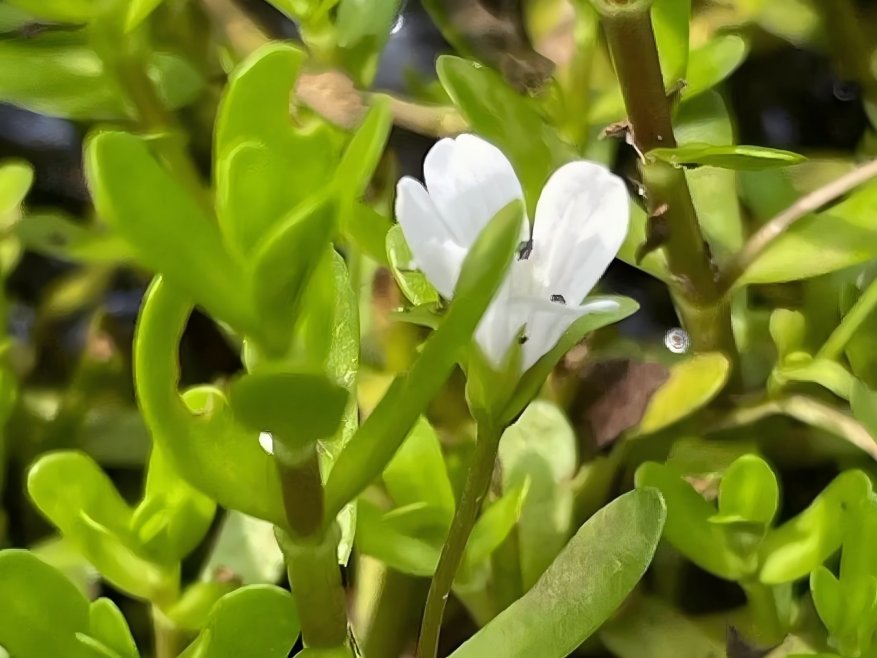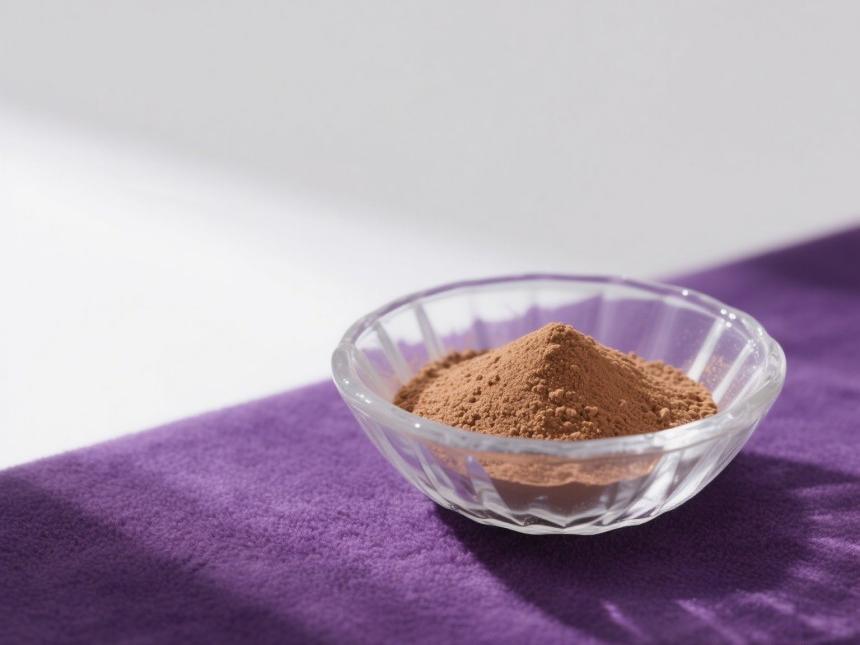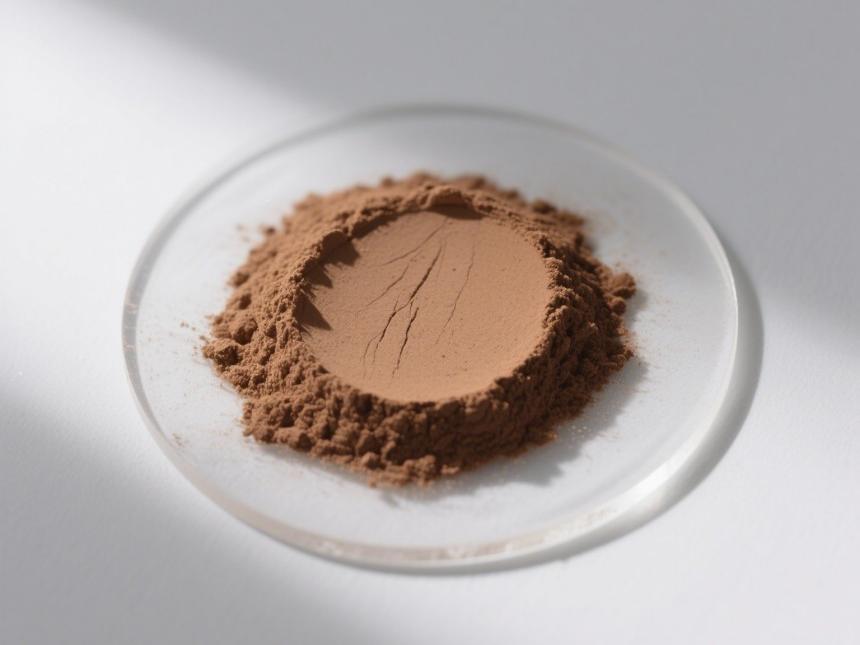Bacopa Monnieri Extract Ingredient Fuels Innovation in Cognitive & Mood Support Products
Bacopa monnieri (L.) Wettst., a precious plant belonging to the genus Bacopa within the Scrophulariaceae family, is widely distributed in tropical and subtropical regions. As a key herb in India's Ayurvedic traditional medical system, it has been used for millennia to enhance health and vitality. Today, Green Spring Technology harnesses modern extraction techniques to transform this ancient wisdom into high-quality standardized ingredients, infusing natural power into contemporary health products.
Green Spring Technology's Bacopa monnieri extract ingredients feature the following core characteristics:
· Highly standardized active components: Advanced processes ensure stable active ingredient content and batch consistency
· Multi-component synergy: Preserves triterpenoid saponins, flavonoids, and other active compounds
· Natural botanical origin: Sourced from premium, sustainably harvested plants with full traceability
This ingredient is suitable for the following product formulations:
· Brain health & cognitive support: Dietary supplements, functional foods
· Emotional Balance & Stress Management: Health beverages, herbal formulations
· Antioxidant & Holistic Wellness: Premium health supplements, plant-based products
Green Spring Technology is committed to providing clients with Bacopa Monnieri extract ingredients featuring clearly defined components and consistent quality, offering customized solutions based on specific requirements. Brands and manufacturers are invited to contact us for samples and comprehensive technical support to jointly develop next-generation natural health products!

1 Natural Active Components of Pseudocentaurea Extract
1.1 Terpenoids: Diverse Applications of Natural Active Components
Since the 1960s, research has progressively identified Bacopa Monnieri as rich in terpenoids, primarily triterpenoids, most of which exist as glycosides. Currently identified aglycone core structures primarily include dammarane, cucurbitane, lupeane, and usuan types, establishing a robust foundation for the extract's biological activity.
Green Spring Technology leverages advanced extraction and purification processes to provide high-purity, stable Bacopa Monnieri extracts. These extracts are rich in diverse terpenoid bioactive compounds and are widely applicable in developing products that enhance brain health, regulate mood, and support cognition. They can be incorporated into innovative formulations such as dietary supplements, functional foods, and beverages.
1.1.1 Dammarane-type Triterpenoids: Core Bioactive Components of Pseudo-Portulaca
Bacopa Monnieri extracts are rich in multiple highly active compounds, with dammarane-type triterpenoids being the most representative class. These compounds predominantly exist as glycosides, with their aglycone structures primarily comprising two major classes: jujubogenin and pseudojujubogenin. Diverse glycosylation patterns form multiple active units.
To date, research has successfully isolated and identified 34 dammarane-type triterpenoids from the whole plant of Bacopa Monnieri. These compounds feature well-defined structures and diverse biological activities, providing a solid scientific foundation for the development of related health products.
1.1.2 Cucurbitane Triterpenoids: Key Contributors to Diverse Bioactivities
Since Bhandari et al. first isolated four novel cucurbitane triterpenoids from Bacopa Monnieri in 2007, this class of compounds has emerged as a focal point in the plant's chemical research. To date, seven cucurbitane-type triterpenoids have been successfully isolated and identified from Pseudopurslane, demonstrating rich structural diversity and bioactive potential.
1.1.2.1 Lupe-type and Ursane-type Triterpenoids: Key Representatives of Pentacyclic Triterpenoids
As key constituents of pentacyclic triterpenoids, lupane-type and ursane-type triterpenoids also demonstrate significant presence in Bacopa Monnieri. To date, four lupane-type and one ursane-type triterpenoid components have been isolated from this plant, further enriching its spectrum of bioactive compounds.
1.2 Flavonoids: Premium Raw Materials for Natural Antioxidants and Health Formulations
Beyond triterpenoids, extracts from Bacopa Monnieri contain diverse flavonoid compounds, primarily including various active forms such as flavones and chalcones (Compounds 47–53), further enriching its natural constituent system.
1.3 Phenethyl Alcohol Glycosides: Novel Functional Components for Synergistic Enhancement
Research indicates that Bacopa Monnieri also contains multiple phenethyl alcohol glycoside bioactive compounds. Since their initial discovery in 2002, new components have been progressively isolated and identified. To date, seven such compounds have been successfully characterized, demonstrating rich compositional diversity.
Green Spring Technology employs precision extraction techniques to ensure complete retention and batch consistency of phenethyl alcohol glycosides in its Bacopa Monnieri extracts. These compounds synergize with triterpenoids and flavonoids, providing comprehensive formulation solutions for brain health, antioxidant, and stress management products. They are particularly suitable for developing premium health products such as dietary supplements and functional beverages.
1.4 Sterol Compounds: Natural Plant Steroid Sources
Bacopa Monnieri extract contains natural sterol compounds, which are important bioactive components derived from the plant's mevalonate pathway. These substances offer unique application value in formulations. Multiple sterol components (61–65) have been identified in this plant, further expanding the diversity of its active constituents.
1.5 Other Compounds: Comprehensive Application of Diverse Bioactive Components
Bacopa Monnieri extract is not only rich in major active components such as triterpenoids, flavonoids, phenethyl glycosides, and sterols, but also contains numerous other compounds with application value. Research has successfully isolated nine additional types of components, including aromatic compounds and α,β-unsaturated lactones, demonstrating the richness and diversity of its constituent system.
Through advanced extraction and separation technologies, Green Spring Technology comprehensively preserves Bacopa monnieri's diverse active components, ensuring raw material integrity and synergistic efficacy. These multifaceted constituents provide a more holistic natural solution for brain health, emotional regulation, antioxidant support, and overall wellness products. They are particularly suited for innovative development in premium dietary supplements, functional foods, and beverages.
2 Health Support from Bacopa monnieri Extract Raw Materials
2.1 Emotional Health Support Application
Research indicates that Bacopa monnieri extract demonstrates positive effects on emotional health across multiple experimental models. The extract significantly improves behavioral performance, with active components such as bacoside A, bacopasaponin C (20), bacopaside I (23), and bacopaside II (24) believed to play crucial roles [46-49].
Kumar et al. [50] experimentally demonstrated that Bacopa monnieri extract aids the body in coping with stress, promotes balance in serum levels of related hormones, and supports the expression of brain-derived neurotrophic factor (BDNF) and neuronal markers in the hippocampus. Its effects are comparable to those of certain common compounds. The research team previously conducted in-depth studies on the isolated active compound bacopaside I (23), revealing that this component enhances the body's antioxidant capacity and is associated with the activation of the noradrenergic system [49].
Furthermore, this compound demonstrated potential to regulate the hypothalamic-pituitary-adrenal axis and BDNF signaling pathways in stress models. Rauf et al. [51] also explored the mood-supporting properties of Bacopa monnieri methanol extract. Results showed that continuous intake of varying doses over 8 days significantly improved behavioral indicators, suggesting promising applications for this ingredient in mood health products.

2.2 Mood Support Application
Recent studies systematically evaluated the mood support function of Bacopa monnieri extract through multiple established behavioral tests (e.g., open field, elevated plus maze, and novel environment feeding inhibition test). Results demonstrated dose-dependent soothing effects across all models, with particularly pronounced benefits in higher dosage groups.
Notably, no significant activity suppression was observed within the experimental dosage range, indicating excellent adaptability. This ingredient supports emotional equilibrium while maintaining normal cognitive performance, making it suitable for developing and applying in emotional wellness products.
2.3 Support for Cognitive and Memory Functions
Multiple experimental studies indicate that Bacopa monnieri and its extracts exert positive effects on promoting learning, memory, and cognitive functions. Its primary active component is bacoside A, a dammarane-type triterpene saponin containing a sugar chain [35].
Long-term studies indicate that supplementing normal experimental animals with Bacopa monnieri extract induces positive structural changes in neurons within brain regions associated with learning and memory, including significant increases in dendritic length and branching points [36-38]. Furthermore, the standardized Bacopa monnieri extract (CDRI-08) demonstrates supportive effects on memory function under various external challenge conditions [39-42].
Regarding mechanism exploration, the ethanol extract of Bacopa Monnieri has been shown to help maintain the health of memory-related brain regions. Research indicates this extract supports the expression of signaling proteins associated with neuroplasticity in the hippocampus and contributes to the stabilization of brain-derived neurotrophic factor (BDNF) mRNA levels. Simultaneously, it promotes the normal functioning of the cholinergic system and exerts positive regulatory effects on brain region structure [43].
Further research indicates that Bacopa Monnieri extract enhances episodic memory capacity by regulating serum levels of certain neurotransmitters, activating specific receptor pathways, and influencing the expression of memory-related proteins in the hippocampus (such as SYT1, SYP, p-αCaMKII, and PSD-95) [44-45].
Green Spring Technology leverages advanced extraction techniques and quality control systems to provide customers with high-quality, standardized Bacopa Monnieri extract ingredient. These are suitable for developing brain health and cognitive support products, empowering brands to create science-backed functional products. Contact us for samples and technical documentation.
3 Outlook
As research deepens, an increasing number of bioactive compounds in Bacopa Monnieri have been successfully isolated and identified. To date, multiple high-value compounds—including triterpenes and their glycosides, flavonoids, phenethyl glycosides, and sterols—have been identified in this plant, establishing a robust foundation for its application in health products.
Green Spring Technology leverages advanced extraction and standardization processes to consistently supply premium-quality bacopa monnieri extract raw materials. With clearly defined components and consistent quality, this extract is suitable for formulations targeting emotional well-being, stress relief, and cognitive support, helping your brand create differentiated, science-backed premium products. Learn More About Our One-Stop Solution for Traceable and Standardized Bacopa Monnieri Extract.
We invite partners across industries to contact us for purslane extract samples and detailed technical documentation at helen@greenspringbio.com or WhatsApp: +86 13649243917. Green Spring Technology is committed to collaborating with you on innovative formulations, empowering your products to gain a competitive edge in the market.
References
[1]Editorial Committee of the Flora of China. Flora of China (Vol. 67) [M]. Beijing: Science Press, 1979.
[2]Russo, A., & Borrelli, F. Bacopa monniera, a reputed nootropic plant: An overview [J]. Phytomedicine, 2005, 12(4): 305-317.
[3]Huang, Y., & Yang, M. Research progress on the chemical constituents and pharmacological effects of Bacopa monniera [J]. Chinese Journal of New Drugs, 2006, 15(9): 683-687.
[4]Gu Guanyun, Jiang Yu. Chemical constituents, pharmacological effects, and clinical application of Bacopa monniera for improving cognitive function [J]. Modern Drugs and Clinical, 2005, 20(1): 6-10.
[5]Zhang Diqun, Mei Heshan, Shi Xiaowei, et al. Bioactivity and Clinical Research of Pseudocentaurea. Natural Products Research and Development, 2007, 19(3): 524-528.
[6]Kawai K I, Shibata S. Pseudojujubogenin, a new sapogenin from Bacopa monniera [J]. Phytochemistry, 1978, 17(2): 287-289.
[7]Ohta T, Nakamura S, Nakashima S, et al. Chemical structures of constituents from the whole plant of Bacopa monniera [J]. JNat Med, 2016, 70(3): 1-8.
[8]Garai S, Mahato S B, Ohtani K, et al. Dammarane-type triterpenoid saponins from Bacopa monniera [J]. Phytochemistry, 1996, 42(3): 815-820.
[9]Garai S, Mahato S B, Ohtani K, et al. Bacopasaponin D-A pseudojujubogenin glycoside from Bacopa monniera [J]. Phytochemistry, 1996, 43(3): 447-449.
-
Prev
Bacopa Monnieri Extract: Derived from Nature, Empowering Health Product Innovation
-
Next
Natural Bacopa Monnieri Extract Empowers Cognitive Support Products


 English
English French
French Spanish
Spanish Russian
Russian Korean
Korean Japanese
Japanese





